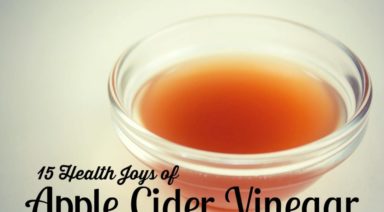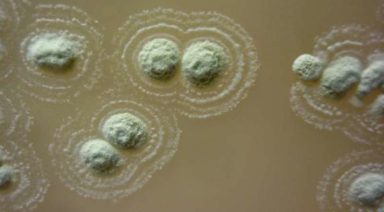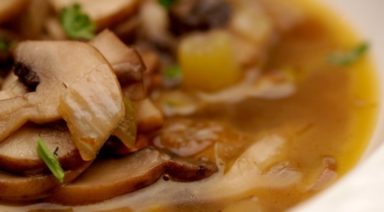Gaia Herbal 101: The Powerful Elderberry

The humble elderberry, of the genus Sambucus, has been a multipurpose herbal workhorse for centuries. Species of Sambucus are found throughout the Northern hemisphere from Asia to North America — throughout the world, elderberry has been used for medicine, food, and wine making.
In Chinese medicine, elderberry is called “Jei Gu Mu,” and is used to treat the “damp” conditions we call colds or flu. It is also used to reduces fevers and treat urinary tract and bladder imbalances — Jei Gu Mu is said to work specifically in the bladder, kidney, and lung meridians.
Eastern woodland Native Americans made tea from dried elderberry plant leaves, poultices for wounds from the flowers, and cooked the berries to make throat-soothing syrups for winter cold and flu symptoms. Evidence of cultivated elderberry plants has been discovered by archaeologists near early native settlements and sacred sites.
In Europe, Elderberry was attributed with magical qualities — folk wisdom said that a person could hide under an elderberry bush to escape goblins, trolls, and witches. There are several stories of elderberry bushes being portals to fairy realms.
Elderberry Medicinal and Protective Properties
Elderberry has been called “the medicine chest of the common people.” As a folk medicine, elderberry has been used to treat constipation, stomach upset, colds, sore throat, and rheumatism. The fruit, or berries, contain antioxidant flavonols and have high levels of Vitamins A, B6, and C as well as iron, potassium, and calcium.
While it is known that cancer cells may appear in the body at any time, it is the combination of robust immune function with a diet rich in flavonoid antioxidants that helps to stop rogue cells in their tracks, preventing tumor formation.
Flavonoids are the natural pigments that give fruits and vegetables their colors. These pigments have high concentrations of antioxidants with powerful health benefits such as reducing the risks of cancer, stroke, and heart disease. The brighter or deeper the color of a fruit or vegetable, the higher the flavonoid concentration.
Blueberries, cherries, beets, red onions, red cabbage, raspberries, purple grapes, and deep purple elderberry are examples of foods rich in color and flavonoid content.
According to Healthline.com elderberry is packed with the flavonols quercetin, kaempferol and isorhamnetin. The first, quercetin, has anti-inflammatory properties and while research is scanty, quercetin is believed to offer allergy relief, reduce high blood pressure, and increase endurance. Some studies suggest that quercetin can slow cancer cell growth. It also protects from accumulations of LDL, a.k.a. “bad” cholesterol.
A review published in the scientific journal Food Chemistry notes that kaempferol not only protects from inflammation and free radicals due to its antioxidant properties but also plays a complex role on a molecular level. This flavonoid signals cancer cells to die but protects healthy cells. Research shows that kaempferol is more effective when paired with quercetin.
Isorhamnetin, the third flavonoid in elderberries, shares the same benefits of quercetin and kaempferol but is also thought to reduce the effects of diabetes, such as diabetic cataracts and high blood glucose levels. Research shows that out of a group of flavonoids studied, isorhamnetin has the most powerful anti-viral (flu) properties.
Research
Dozens of studies and articles confirm the efficacy of elderberries. As noted in the Oct. 2017 issue of Pharmacy Times, “In one placebo-controlled, double-blind study, 93.3% of the people taking an elderberry preparation reported significant improvement in influenza symptoms within two days of starting it, compared with the 6 days it took for the placebo group to see improvement.”
Another study showed that patients receiving elderberry within the first 48 hours of symptoms recovered from flu and colds four days sooner than a control group.
A research paper published in the journal Nutrients explored the immune-compromising effects of long-distance air travel. Oxygen pressure, vibration, low humidity, and chemicals from oils used for aircraft engines all contribute to compromised immune function during air travel, especially on long-distance flights. Resulting nasal and sinus dryness sets passengers up for airborne bacteria and viruses — this is compounded by close proximity to others.
Study participants did indeed pick up cold germs, but the research reported that “elderberry supplementation decreased the symptom load and shortened the cold duration by approximately two days. This shows for the first time that elderberry may be effective for decreasing respiratory symptoms during travel on long-haul flights.”
In 2011, the Journal of Complementary and Alternative Medicine reported that elderberry preparations have protective properties for two kinds of streptococcal (strep) bacteria — it also has “an inhibitory effect on the propagation of human pathogenic influenza viruses,” meaning it protects against flu viruses. Another study noted that elderberry has a “chemoprotective” activity, meaning that it helps protect healthy cells and tissues during chemotherapy treatments.
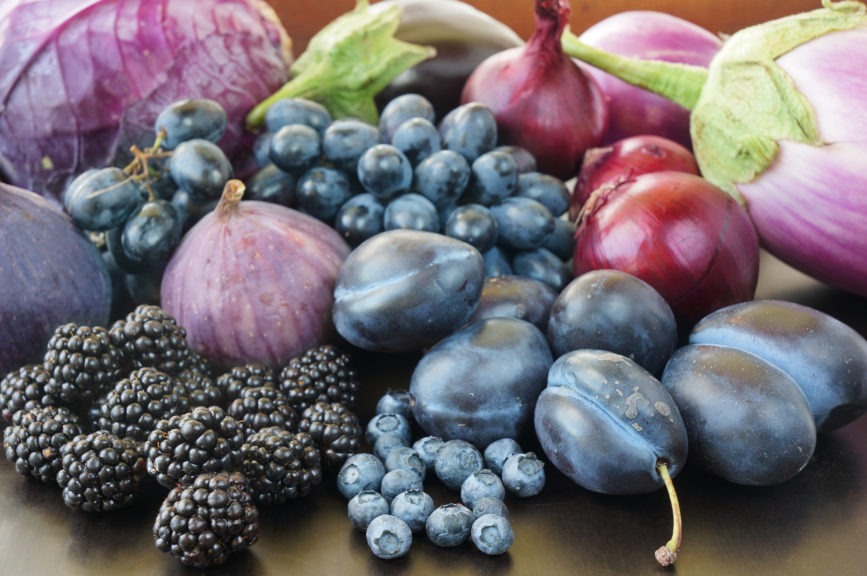
How to Use Elderberry
A Google search on “elderberry lozenges” returned 633,000 results — the berry is popular among those who are familiar with its protective action against colds and flu. Another search on “elderberry products” returned 11 million results — finding products online or on health food store shelves, such as Whole Foods and Vitamin Cottage, is quick and easy.
Many prefer to make their own elderberry syrup and tea. For those who do, dried, organic elderberry is available on Amazon; the Monterey Bay Spice Company sells organic, whole dried elderberries. But some research will reveal the best prices and quality for bulk dried elderberry. Buying in bulk is the most cost-effective way to get the berries into your diet.
Once you’ve got it, what do you do with it? The quickest, easiest way to use the dried fruit is to make tea; for every two cups of water, add one tablespoon of dried berries. Warming spices such as ginger can be added, and a dollop of honey helps it all go down and eases a sore throat.
Katie Wells, a.k.a. the Wellness Mama has published her recipe for elderberry syrup — you can also try the simple recipe below.
Elderberry Syrup Recipe
½ cup dried elderberries
3½ cups water
½ cup honey
Add the dried berries to the water and bring to a boil. Additional ingredient preferences such as lemon, cinnamon, or cardamom may be added. Once boiling, bring to a low simmer and cook until the liquid reduces by half.
Strain well and add honey while the liquid is still hot. Mix well, cool, and store in the refrigerator. Many suggest taking one tablespoon a day for flu season protection.
17 Ways to Use Apple Cider Vinegar for Your Health and Wellness
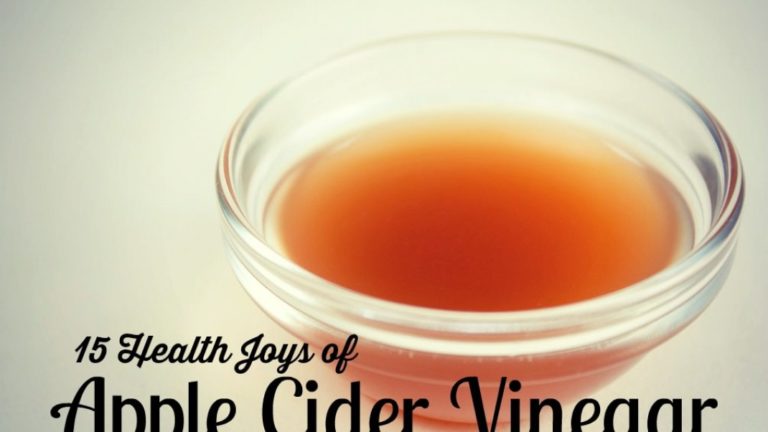
Apple cider vinegar, commonly denoted as ACV, has received a lot of hype as a miracle home remedy for all kinds of ailments, from allergies to arthritis. While a lot of conclusive research needs to be done, there are all kinds of ACV tricks you can try for your home and wellness.
What is Apple Cider Vinegar?
Apple cider vinegar is the product of fermentation—the process in which sugars in food are broken down by bacteria and yeast. In stage one of fermentation, the sugars are turned into alcohol. Stage two, if the alcohol ferments further, you get vinegar. While vinegar can be made from all sorts of things—fruits, vegetables, and grains –ACV, is, unsurprisingly, made from pulverized apples. The main ingredient of apple cider vinegar, or any vinegar, is acetic acid. It also has other acids, vitamins, mineral salts, and amino acids.
It sounds like a relatively innocuous substance more likely to be found in a salad dressing or used as a preservative, but because of its unique properties, ACV has a huge range of uses.
15 Health Benefits to Apple Cider Vinegar
Adding apple cider vinegar as a supplement to your diet can result in a number of benefits to your health. Apple cider vinegar may help with everything from heart disease to weight loss. Below is a list of 17 proven benefits.
1. Help with Heart Disease
If you’re looking for an alternative modality to improve heart health and ameliorate high blood pressure, ACV could be exactly what you’re looking for. Though clinical trials haven’t been conducted yet on humans, trials on animals have shown ACV to reduce triglyceride and cholesterol levels, two of the major contributing factors to heart disease.
2. Lower Blood Sugar
Do you experience high blood sugar levels from type 1 or type 2 diabetes? Are your insulin levels low and your glucose levels too high? Try taking ACV after meals to lower your blood sugar levels. According to research conducted from a small study in 2004, subjects taking 20mL of ACV diluted in 40mL of water with a teaspoon of saccharine, lowered their blood sugar levels after a meal. This reduction was significant, though small, and only lasted about 30 minutes.
While this method needs more research conducted before it could be considered a viable treatment, some researchers have described it as a potential adjuvant to other treatments for diabetes.
3. Leg Cramp Relief
Ever had a crazy sudden pain in your leg in the middle of the night? It’s the worst! Stop the attacks with an ACV tonic. Taken diluted in water twice daily, it will dissolve acid crystals in the blood and provide potassium, calcium, and other essential minerals to the body needed to ease the leg cramps.


